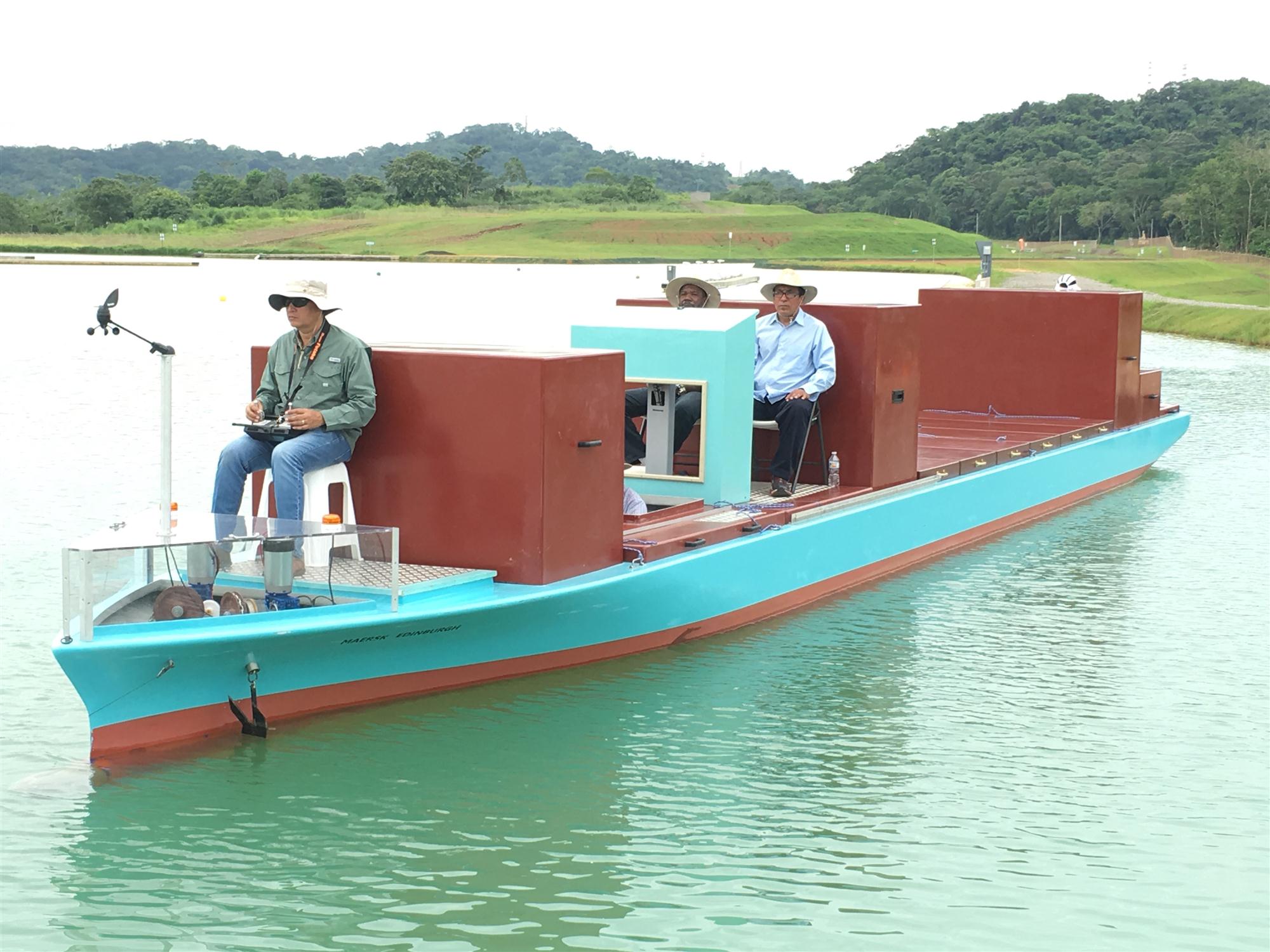More than 70 vessels have successfully transited the expanded Panama Canal since its opening June 26, when the Neopanamax vessel COSCO Shipping Panama transited the Agua Clara locks.
"We are very pleased with the first month of activity at the expanded canal,” said Panama Canal administrator Jorge L. Quijano. “We have the highest esteem for our customers, and we are glad that they have decided to come on board to be part of the newly expanded canal."
Quijano was providing representatives of shipping lines and shipping agents with an update on the operations of the expanded canal, following the collision of the 8,500 TEU container ship Xin Fei Zhou with a wall at the Agua Clara locks on the Atlantic side of the canal on July 21.
The canal authority referred to the collision as “a minor incident.”

Canal operational testing and training remains a priority, the authority said in a statement. More than 50 trial lockages have taken place in the Agua Clara Locks with the Panama Canal-chartered Neopanamax dry bulker MV Baroque since the beginning of June. The vessel is used to conduct testing and training of the new locks. Pilots transiting the Neopanamax vessels all have at least 16 years transiting vessels at the Panama Canal.
Additionally, a scale model training centre near the canal provides pilots with extra opportunity for training.
In addition to container ships, the expanded canal has also seen liquefied petroleum gas (LPG) carriers, vehicle carriers and liquefied natural gas (LNG) carriers. The LNG vessels were the first to transit the waterway since the expansion opened trade possibilities to this new market segment.
In addition, the canal authority reports receiving more than 250 reservations for transit of the expanded canal, including seven cruise ship reservations. Since the expanded canal opened, the authority has reported that major lines have rerouted service to the Panama Canal to take advantage of the significant time savings the waterway provides. The 2M Alliance, for example, which includes shipping lines Maersk and Mediterranean Shipping Co., announced in July that they are rerouting Asia to US East Coast service to the Panama Canal.
In addition to the COSCO Shipping Panama transit, other first transits included the first LPG carrier on June 27, the NYK Lycaste Peace; the first vehicle carrier on July 6, the NYK Iris Leader; and the first LNG carrier on July 25, the Maran Gas Apollonia.
Canal authority deputy administrator Manuel E. Benítez told members of the media the day before the expansion’s inauguration that the project can accommodate 98% of all container ships floating today. The authority began planning for the expansion nearly two decades ago.
“We knew at that time that we would expand the Panama Canal, or we would risk having an obsolete canal that would not cater to the larger ships that were going to be deployed,” he said. “We looked at several sizes and discussed the trade-off between the size of the locks and the cost of the project. At the time, we decided to tend to the workhorse of this canal, which is the container ship. At that time, it wasn’t on anyone’s radar, probably, that these mammoth ships that are sailing today would be coming out.”
Benítez said that with the order books and ships that are coming online, he anticipates that by 2019, 95% of ships will be able to transit the expanded canal.
“Are the ships going to grow forever? There is a point of diminishing returns,” he said. “We think that we can accommodate the ships that make this project economically feasible, and will bring the revenues we expect.”
By Gregory Glass
Asia Cargo News | Hong Kong



